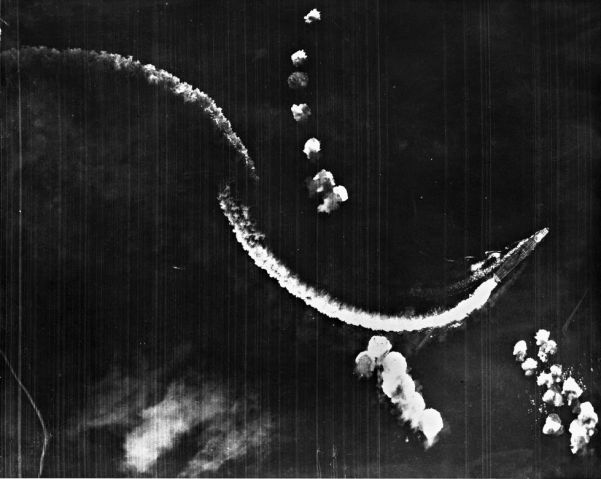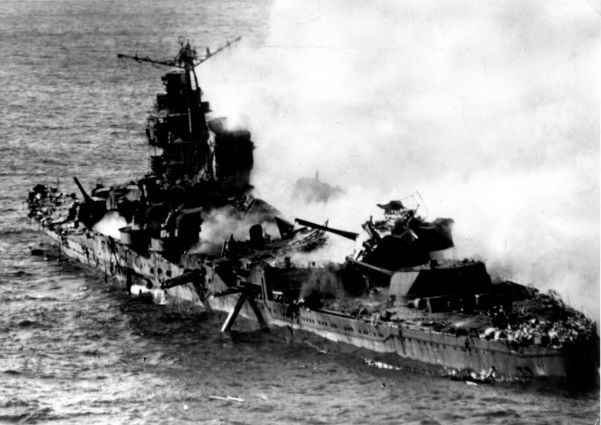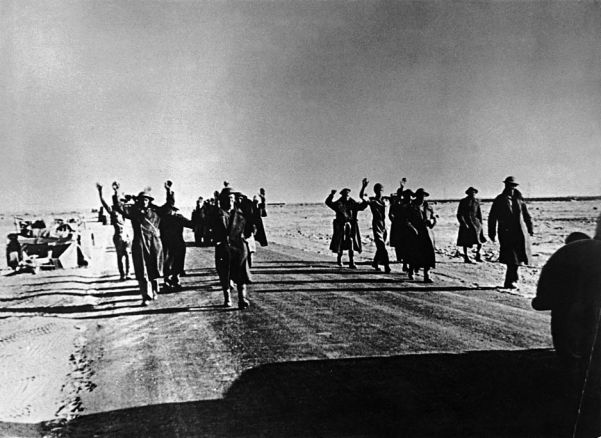1 June
Air War, Germany
Britain launches a ‘1000 Bomber’ raid against Essen and the Ruhr industrial area.
4 June
Sea War, Pacific


The Battle of Midway begins. Japan’s Admiral Chuichi Nagumo aims to seize the US base at Midway and then destroy the US Pacific Fleet commanded by Admiral Chester Nimitz. Japan deploys 165 vessels, including eight carriers, but they are too widely dispersed to provide mutual support. US codebreakers are able to warn the Pacific Fleet, which then converges to repel the Midway attack and is not diverted by a raid on the Aleutian Islands. The US Navy has a smaller force but has managed to gather three carriers.
The reconnaissance operation by Japan’s 29 large cruiser submarines fails to establish the movements of the Pacific Fleet. Nagumo has no idea of US deployments when he first strikes Midway. Japan’s I Carrier Striking Force is decimated by US aircraft and three heavy carriers are lost. Japan’s fourth carrier, Hiryu, then cripples the US carrier Yorktown before herself being fatally hit. Japan’s attempt to destroy the enemy with its superior forces by luring it into a surface battle has failed. The loss of half of its carrier strength, plus 275 aircraft, puts Japan on the defensive in the Pacific.
7 June
Eastern Front, Ukraine
The siege of Sebastopol intensifies with massive assaults by Germany’s Eleventh Army. Sebastopol is under heavy shelling from German siege artillery, which includes the Dora gun, the world’s largest mortar. The Soviet defenders continue to hold out, despite the intense bombardment.
10 June
Home Front, Czechoslovakia
Reinhard Heydrich, the deputy governor of occupied Czechoslovakia and architect of the Nazi genocide program, dies after an attack by Czech agents on May 27. In retaliation, over 1000 Czechs accused of anti-Nazi activities are murdered, 3000 Czech Jews are deported for extermination, and 150 Berlin Jews are killed. The Czech village of Lidice is leveled. Its men are executed; its women and children are sent to concentration camps.
10-13 June
Africa, Libya
Axis forces have created a fortified area (‘the Cauldron’) inside the Allied lines. Following the Free French withdrawal from Bir Hacheim on the 10th-11th, Axis armor advances east from the Cauldron to threaten the entire Eighth Army. British commander General Neil Ritchie orders a withdrawal on the 13th.
18 June
Politics, Allies
At the Second Washington Conference in the United States, British Prime Minister Winston Churchill and US President Franklin D. Roosevelt try to agree a strategy in Europe for 1942-43. Conditions appear unsuitable for a ‘Second Front’ in France, so Churchill proposes a North African invasion. In July, Roosevelt accepts that Europe cannot yet be attacked and agrees to Churchill’s North African option, later code-named Operation Torch. Cooperation in nuclear research is also agreed on.
Air War, Germany
Britain launches a ‘1000 Bomber’ raid on Bremen.
21 June
Africa, Libya

Following the Allied withdrawal into Egypt, the Tobruk garrison suddenly falls following German land and air attacks. Some 30,000 men, rations, and fuel are seized. Newly-promoted Field Marshal Erwin Rommel continues chasing the retreating Allies, taking Mersa Matruh on the 28th. General Sir Claude Auchinleck, British Middle East commander, takes personal charge of the Eighth Army and establishes a fortified line. This runs inland for 40 miles (64 km) from El Alamein on the coast to the impassable Quattara Depression. Rommel fails to penetrate the position, and the Front stabilizes as his lines of supply in the Mediterranean are being strained by British air and sea attacks, assisted by intelligence from codebreaking.
25 June
Politics, United States
Major General Dwight D. Eisenhower assumes command of US forces in Europe.
28 June
Eastern Front, Ukraine
Germany launches its summer offensive, with its Army Group South attacking east from Kursk toward Voronezh, which falls nine days later.
